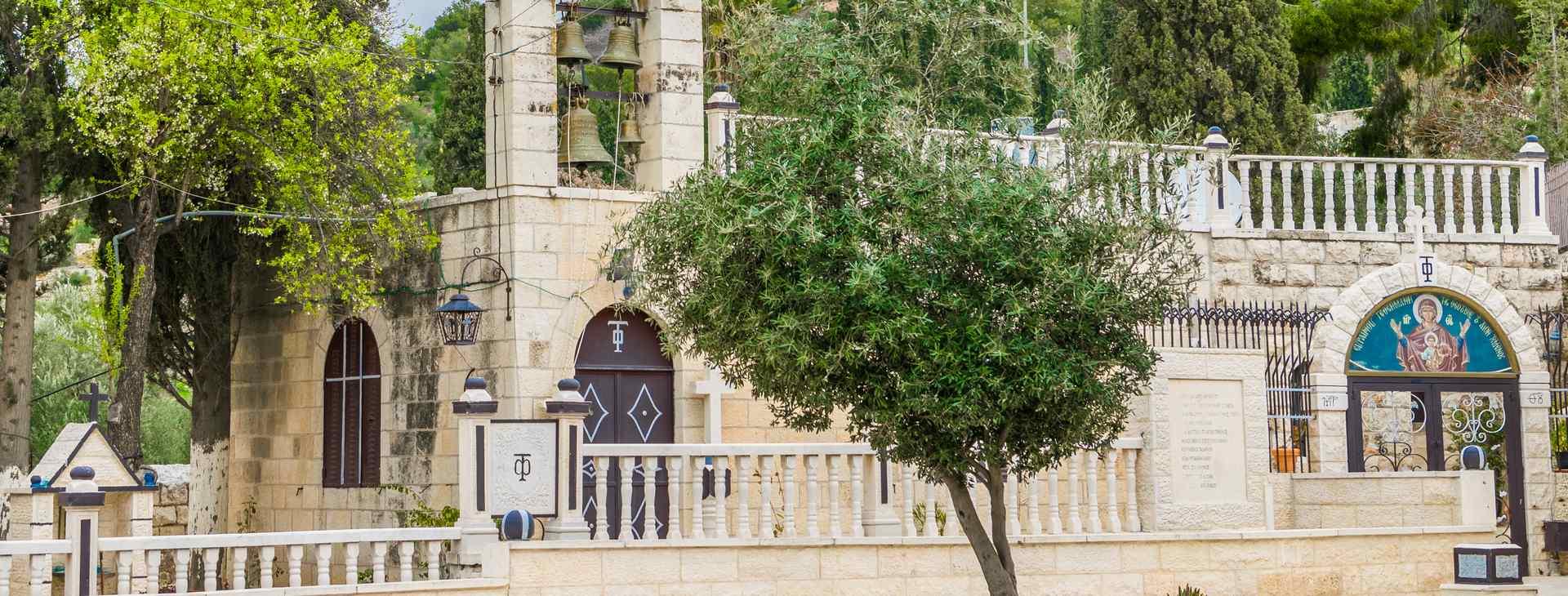The mountain is religiously important for all three religions - on its slopes, there is a Jewish cemetery, one of the oldest in the world, where Jews were buried from the time of the First and Second Temples. Christians identify the mountain with sites where Jesus worked in his last days in Jerusalem, and Muslims associate it with the Day of Judgment at the end of time (based on the text in the Bible).
Among the prominent sites on the Mount of Olives:
- Church of All Nations
- Church of Mary Magdalene
- Mary's tomb
- Gethsemane
About the history of the Mount of Olives
Jewish tradition attaches great importance to the Mount of Olives in various contexts. During the days of the Temple, the Mount of Olives was used as the place where the red cow was burned, as written in the Mishnah in Tractate Midod: "All the walls that were there (on the Temple Mount) were high, except for the eastern wall, where the priest who burns the red cow stands on the Mount of Anointing and aims and sees the entrance of the temple at this time of blood." In those days, the Mount of Olives was used as one of the stations in the chain of torch-lighting, heralding the beginning of Rosh Chodesh: "And where did the torches come from? From the Mount of Anointing to Sarataba, and from Sarataba to Gropina..." (Mishnah Rosh Hashanah).
The Mount of Olives is also linked to the sad times of Jerusalem after its destruction. Jewish tradition sees it as the place where the Shekinah waited after the destruction of the Temple for Israel to repent: "For three and a half years, the Shekinah sat on the Mount of Olives and announced three times each day, saying - Return naughty children, and heal your sins, And since they did not return, the Shekinah began to blossom in the air" (Psikta of Rabbi Kahana).
After the Holocaust and until the early Middle Ages, Jews were not allowed to live in Jerusalem, but they were allowed to visit the Mount of Olives on Tisha Be'av, to look at the Temple Mount and mourn its destruction. A vicious description of the custom appears among the writings of the church father Hieronymus, who describes the misery of the Jews, and how "this poor people weep for the ruins of their temple, and do not deserve mercy." At that time, many churches were built on the Mount of Olives, and it became a distinct center of Christian worship. After the conquest of Jerusalem by the Muslims, Jews returned to live there, and the visit to the Mount of Olives became a joyous event. Every year at Hosanna Raba (the end of the Sukkot holiday), the Jews gathered for large and impressive ceremonies. They surrounded the summit of the Mount of Olives with processions and singing.
The churches on the Mount of Olives have gone through several incarnations, usually Byzantine construction, Crusader construction on the Byzantine ruins, and modern renovation. You can find the Church of Mary Magdalene, the Church of All Nations (Gethsemane), the Church of Our Father in Heaven, and more among the churches on the Mount of Olives. The towers of the Russian Church of the Ascension and the Augusta Victoria Church stand out on the ridge skyline. The Jewish cemetery on the Mount of Olives stretches on the mountain's slopes to the south, and at the entry of Kidron River. Due to its proximity to the city and its soft and convenient rocks for quarrying, the place was used for burials already in the times of Canaanites. Jewish graves from the First and Second Temples were discovered at the bottom of the Mount of Olives.
There are many written testimonies about the Jewish burial tradition on the Mount of Olives from the Middle Ages to the present day. This is the only place in the world where an almost continuous burial has occurred for over four thousand years. When Jerusalem was divided between 1967-1948, the Jordanians desecrated the cemetery and even built a hotel on top of it. The cemetery is now undergoing restoration and reconstruction with the Jerusalem Municipality and the Elad Association. We recommend arriving at the place in the morning. There is no public transportation from the top of the mountain.











